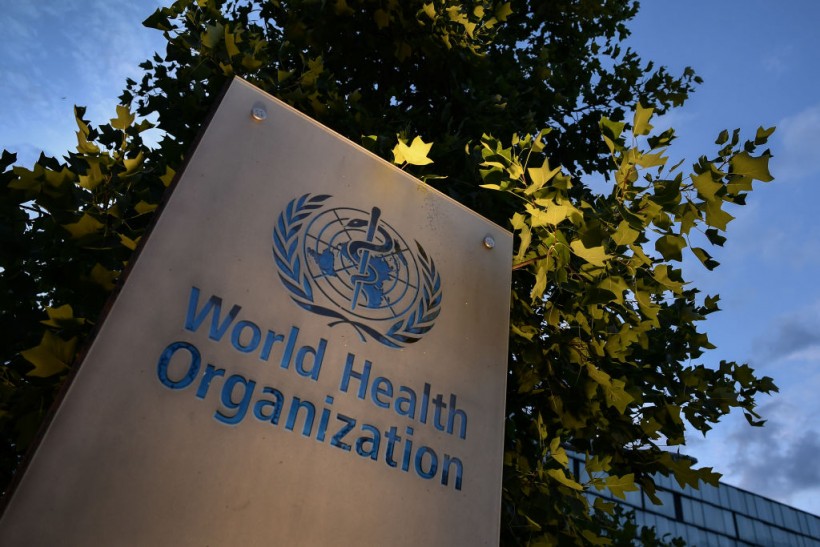Monkeypox has reached media headlines and the attention of global health authorities before mid-May.
For the past several weeks, reports regarding the infamous zoonotic infection have raised fears of a potential widespread disease outbreak.
However, authorities initially claimed it will not reach a pandemic level.
Now, the World Health Organization (WHO) recently issued an update regarding the disease, highlighting the increased risks from the multi-country monkeypox outbreak detected in "non-endemic countries."
WHO Update

The World Health Organization (WHO) on Sunday, May 29, issued a report that the monkeypox disease and its risk to overall global public health has been assessed as "moderate," since this is the first time that related cases and clusters have been reported.
The classification means that there is an increase infection rate of the disease, especially involving human-to-human transmissions.
Amidst growing fears worldwide, the WHO clarified that while such assessment has been placed, it believes that monkeypox outside Africa will not lead to a pandemic.
Regardless, intense monitoring, contact tracing, laboratory investigation, case isolation, and clinical management have been strongly encouraged to be implemented.
Also Read: Monkeypox Outbreak Reaches Canada, U.S. with Confirmed Cases
What is Monkeypox?
According to the WHO, monkeypox is caused by a family of viruses called orthopoxvirus, which was also responsible in the now-eradicated smallpox virus due to the development of drugs and vaccines against it decades ago.
Monkeypox is considered to be a viral zoonotic disease, where it was first detected from colonies of monkeys used for research in 1958.
The first case of a zoonotic or animal to human transmission of the disease was recorded in 1970.
Monkeypox Symptoms and Transmission
The WHO provides the following monkeypox symptoms that can start days after being infected and last for approximately between two and four weeks:
- Fever
- Intense headache
- Muscle aches
- Back pain
- Low energy
- Swollen lymph nodes
- Skin lesions or rash
Unlike SARS-CoV-2, which causes the novel coronavirus disease (COVID-19), the infection rate of monkeypox is relatively low, according to the WHO and other health authorities.
This is due to the fact that monkeypox can only be transmitted through close physical contact with an infected person, including direct touching and sexual contact.
In addition, bodily fluids like saliva, blood, or pus can also serve as channels for the monkeypox virus to spread.
In particular, objects like bedding, clothes, towels, and utensils can serve as an indirect medium for the disease to spread.
Monkeypox Cure and Vaccine
There are "no current direct cure or vaccines against monkeypox."
However, a previous vaccine developed for smallpox called MVA-BN, also known as Imvamune, Imvanex, or Jynneos, was approved back in 2019 to serve as a partial protection against monkeypox.
The WHO is currently working with an unnamed manufacturer to improve the general public's access to the vaccine.
Earlier vaccines developed for smallpox can also serve as some protection against monkeypox, but the WHO said that they are no longer available since the last vaccination against the disease in 1980.
Monkeypox is reportedly "less lethal" compared to smallpox since the body's immune system naturally fends off the former to the point of total recovery.
Nevertheless, there some cases where monkeypox leads to medical complications and even death, the WHO added.
Children, newborns, and people with underling immune system deficiencies.
Monkeypox Cases
According to CNN, monkeypox has 257 confirmed cases with 120 suspected cases found in 23 countries where the virus is not endemic, as per the received reports of the WHO as of Sunday.
In the United States, the Centers for Disease Control and Prevention (CDC) reported 12 confirmed cases of monkeypox as of Friday, May 27.
Meanwhile, monkeypox has continued to affect five countries in central and western Africa, regions where the disease is common and endemic; with reported 1,365 cases and 69 deaths between mid-December of 2021 and late May of 2022, as cited by CNN.
Related Article: Hamsters Owned by Monkeypox Carriers Should be Isolated or Killed
© 2024 NatureWorldNews.com All rights reserved. Do not reproduce without permission.




![Roundworms with Short Memories 'Stop Forgetting' When Frozen or Given Lithium [Study]](https://1471793142.rsc.cdn77.org/data/thumbs/full/70295/280/157/50/40/roundworms-with-short-memories-stop-forgetting-when-frozen-or-given-lithium-study.jpg)
